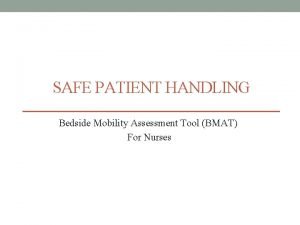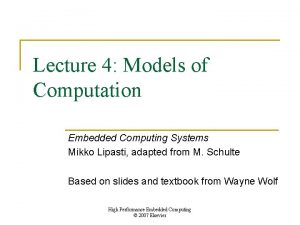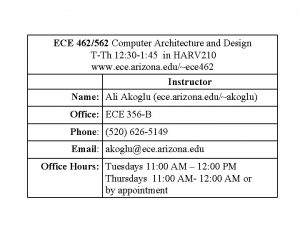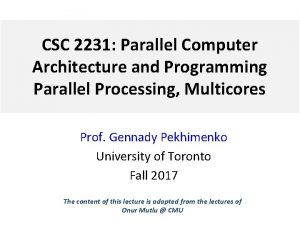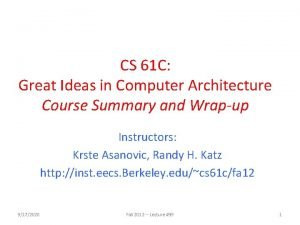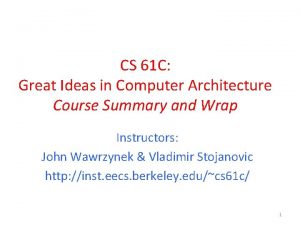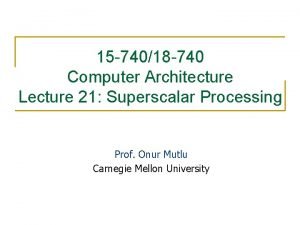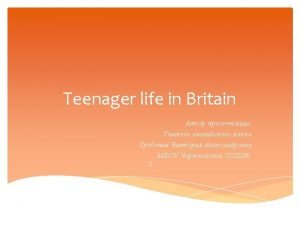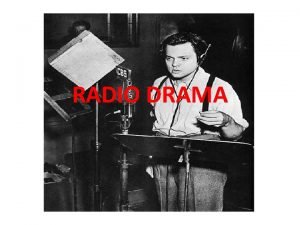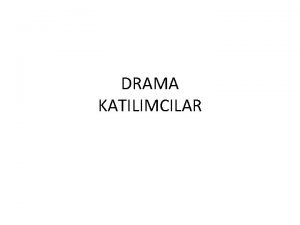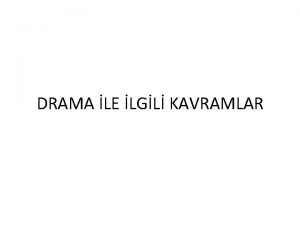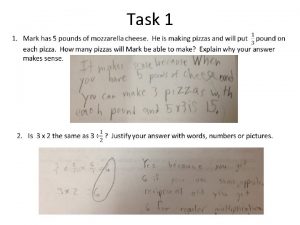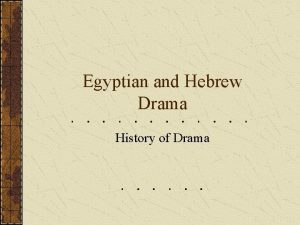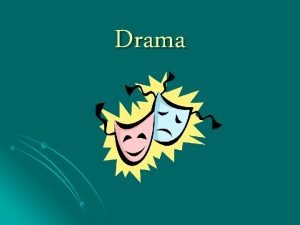A Level Drama induction task 2 Drama induction










- Slides: 10

A Level Drama induction task 2

Drama induction task week 2 • As a Drama and Theatre Studies student you need to be able to make decisions about design elements • Lighting • Costume • Props • Staging/ set • Sound 1. Look through slides 3 - 7 and make notes on all these design elements 2. Look carefully at slides 8 -10. Describe the design elements in each slide in as much detail as possible. Make a decision on sound design too- is there music, sound effects? 3. Send your notes and descriptions to allsopps@vandyke. cbeds. co. uk by Saturday 27 th June

Lighting Key Words 1. Backlit – Light coming from behind the action. This can create silhouettes. 2. Crossfade – One lighting state fades down and another fades up, without darkness 3. Blackout – A sudden or slow fading out of the lighting. 4. Gobo – A plate shape placed in front of a spotlight to create a shape on stage 5. Intensity – The brightness of softness of the light 6. Direction – Where the light is coming from – the source of lighting 7. Follows spot - Powerful light used to follow actors around on stage 8. Flood light – Lights a large area no edge. No lens means no focus. 9. PAR can – Lights a large area with an edge. Lens allows for some focus. 10. Fresnel – Small fixture that gives a soft-edged spot of light. Little flexibility in the size of focus. 11. Profile spot – Long fixture that gives a hard-edge spot of light. Very flexible in the size of focus. 12. Moving heads – Automatic lights that offer flexibility and variation. 13. Shutter – Device in a lantern used to shape a beam 14. Focus – Different types of lantern combinations can focus the audience’s attention on different parts of the stage Lighting Starting Points 1. Colours to enhance 15. Projection 2. Reasons for lighting choices 3. Intentions of lighting choice 16. Fade 4. Time (day/night) 5. Location 17. Intensity 6. Projection 7. Mood/Atmosphere 18. Transitions 8. 9. 10. Symbolism Character Relate to emotion

Costume 1. Time period 2. Status 3. Symbolic/representational 4. Characterisation/Personality 5. Location 6. Communication to audience 7. Garments 8. Colour 9. Material 10. Shape 11. Hair and make-up 12. Costume Prop 13. Fabric 14. Texture Props/Stage Furniture 1. Props used in space 2. Props communicate characterisation 3. Time period 4. Location (where? ) 5. Symbolic Meaning 6. Levels blocks 7. Colours (representational) 8. Entrances-exits Key Words Sound Staging Set 1. Sound Effects 1. Set 1. Time period 2. Recorded 3. Live on stage (actor noises) 2. Status 2. Naturalist 4. Mood/atmosphere 3. Symbolic/representational 5. Historically – (year play set) 3. Abstract 4. Characterisation/Personality 6. Specific sounds (door closing, thunder) 5. Location 4. Minimal 7. Cue 6. Communication to audience 8. Music 5. Colour/location/time 7. Garments 9. Fading 8. Colour (represent information) 10. Background noise 6. Props/Furniture 9. Material 11. Audience/character Impact 7. Levels 10. Shape 12. Live instruments 11. Hair and make-up 13. Soundscape 8. Entrances/Exits 12. Costume Prop 14. strengthen an emotion or empathise the action onstage 9. Awareness of audience 13. Levels indicate status 15. Help set the scene 16. Indicate a change of time or location/scene 14. Texture of set 10. Sight lines 17. Transitions 15. Style 11. Block(create levels) Lighting 12. Projections/use of 1. Backlit – Light coming from behind the action. This can create silhouettes. 2. Crossfade – One lighting state fades down and another fades up, without technology darkness 3. Blackout – A sudden or slow fading out of the lighting. 13. Time period 4. Gobo – A plate shape placed in front of a spotlight to create a shape on 14. Stage directions (stage right) 5. stage Intensity – The brightness of softness of the light EXTENSION 6. Direction – Where the light is coming from – the source of lighting 1. Enhances mood 15. Transitions 7. Follows spot - Powerful light used to follow actors around on stage 2. Indicates location 8. Flood light – Lights a large area no edge. No lens means no focus. 3. Time day/eve e. g. red late eve 16. Traverse staging 9. PAR can – Lights a large area with an edge. Lens allows for some focus. 10. Fresnel – Small fixture that gives a soft-edged spot of light. Little flexibility 17. Theatre-in-the-round in the size of focus. 11. Profile spot – Long fixture that gives a hard-edge spot of light. Very 18. Promenade flexible in the size of focus. 12. Moving heads – Automatic lights that offer flexibility and variation. 19. Proscenium Arch 13. Shutter – Device in a lantern used to shape a beam 14. Focus – Different types of lantern combinations can focus the 20. Thrust Stage audience’s attention on different parts of the stage

Sound 1. Sound Effects 2. Recorded 3. Live on stage (actor noises) 4. Mood/atmosphere 5. Historically – (year play set) 6. Specific sounds (door closing, thunder) 7. Cue 8. Music 9. Fading 10. Background noise 11. Audience/character Impact 12. Live instruments 13. Soundscape 14. strengthen an emotion or empathise the action onstage 15. Help set the scene 16. Indicate a change of time or location/scene 17. Transitions 18. Focus attention on to a particular character Sound: Key Word Fact Sheet

Select a Stage type 1. In the round 2. Traverse 3. End On – Proscenium arch 4. Thrust 5. Drum revolve Select a style 1. Naturalistic 2. Symbolic 3. Minimalistic Other things to consider: 1. Power points – focal points for audience. 2. Levels 3. Entrances / Exits 4. Flats 5. Back drops 6. Flies 7. Platforms 8. Colour, Materials, dimensions Staging 1. Entrances and exits 2. Awareness of audience 3. Appropriate space for performers 4. Sightlines 5. Stage-right left 6. Type of staging (in-the round) 7. Transitions Staging: Key Word Fact Sheet

Costume/Staging/Props Production Elements Costume 1. Time period 2. Status 3. Symbolic/representational 4. Characterisation/Personality 5. Location 6. Communication to audience 7. Garments 8. Colour 9. Material 10. Shape 11. Hair and make-up 12. Costume Prop Staging 1. Set 2. Naturalist 3. Abstract 4. Minimal 5. Colour/location/time 6. Props/Furniture 7. Levels 8. Entrances/Exits 9. Awareness of audience 10. Sight lines 11. Block(create levels) 12. Projections/use of technology 13. Time period 14. Stage directions (stage right) 15. Transitions 16. Traverse staging 17. Theatre-in-the-round 18. Promenade 19. Proscenium Arch 20. Thrust Stage Props/Stage Furniture 1. Props used in space 2. Props communicate characterisation 3. Time period 4. Location (where? ) 5. Symbolic Meaning 6. Levels blocks 7. Colours (representational) 8. Entrances-exits




